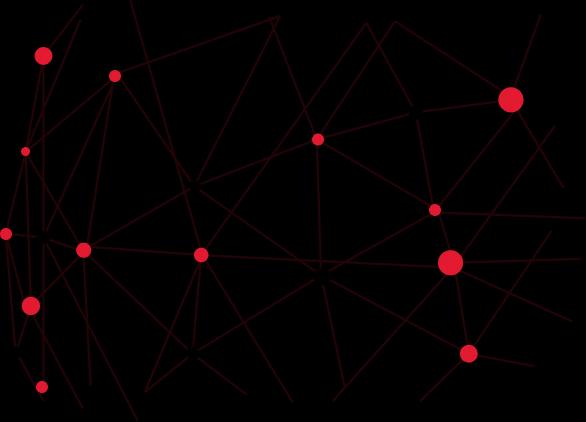
What is Computer Vision? How It Works and Practical Applications
Computer vision is gradually becoming a core technology in artificial intelligence (AI), enabling groundbreaking applications in daily life and industry. But what exactly is computer vision? How does it work, and how is it applied? In this article, Tokyo Tech Lab will help you understand all aspects of this advanced technology.
I. What is Computer Vision?
Computer vision is a branch of artificial intelligence (AI) that focuses on enabling computers to "see," understand, and analyze images and videos similarly to how humans perceive and interpret the world. This technology uses machine learning, deep learning, and image processing algorithms to extract information from visual data, allowing computers to recognize objects, classify images, track movements, and understand context from images or videos.
The essence of computer vision is to simulate human vision but at a much faster speed and with higher accuracy. This technology is becoming increasingly essential in many fields, from facial recognition and medical analysis to self-driving cars and security monitoring.
II. Why is Computer Vision Becoming More Important?
Computer vision plays a crucial role in various industries and is growing rapidly due to the explosion of image data and advancements in AI. As image data dominates online content - from social media to surveillance cameras and IoT devices - the demand for processing and analyzing this information is increasing. Businesses need technology to effectively harness image data, supporting faster and more accurate decision-making.
Additionally, computer vision is essential for Industry 4.0, helping to automate manufacturing processes, inspect product defects, and control industrial robots. In healthcare, this technology aids in diagnosing diseases through X-rays and MRIs, helping to detect cancer and other critical conditions early. In self-driving cars, computer vision enables the recognition of traffic signs, obstacles, and other elements to ensure safer vehicle operation.
Security is another field benefiting significantly from computer vision. Facial recognition technology not only enhances secure identity verification but also aids in public security monitoring and detecting suspicious activities. In e-commerce, computer vision improves shopping experiences by enabling image-based product searches and optimizing ads based on image content analysis.
Furthermore, computer vision is paving the way for future technologies such as the Metaverse, virtual reality (VR), and augmented reality (AR), creating more immersive digital experiences. In smart agriculture, it helps detect pests and monitor crop growth using satellite imagery.
With the integration of AI and big data, computer vision is not just helping businesses optimize operations but also driving breakthroughs in multiple fields. This technology is and will continue to be a vital factor in modern societal development.
III. How Computer Vision Works
Computer vision works by mimicking how humans perceive and understand the world through images and videos. However, instead of relying on a complex nervous system like humans, computer vision uses algorithms, AI, deep learning, and image processing techniques to analyze and recognize objects.
Before diving into how computer vision works, let’s explore its core components to better understand this technology.
1. Core Components of Computer Vision
1.1 Image Processing and Data Extraction
Before analyzing an image, computer vision goes through preprocessing steps such as:
-
Image format conversion: Transforming color images (RGB) into grayscale or other formats suitable for AI models.
-
Noise reduction: Using filters (Gaussian, Median) to smooth images and enhance analysis accuracy.
-
Image enhancement: Adjusting brightness and contrast to improve recognition capabilities.
After preprocessing, the system extracts key features from the image, such as:
-
Edges and shapes (using algorithms like Canny Edge Detection)
-
Textures and patterns (via methods like Gabor filters or Local Binary Patterns – LBP)
-
Feature points for object recognition in images
1.2 Deep Learning Models and Convolutional Neural Networks (CNN)
Convolutional Neural Networks (CNN) are widely used in computer vision. This architecture operates through three main layers:
-
Convolutional Layer: Detects image features by scanning sections of the image using filters (kernels).
-
Pooling Layer: Reduces data size while preserving essential information, speeding up processing.
-
Fully Connected (FC) Layer: Converts the outputs from previous layers into a probability list to classify images.
CNN enhances computer vision's ability to recognize images quickly and accurately, particularly in applications like facial recognition, object detection, and image classification.
2. How Computer Vision Works
2.1 Image Data Collection and Preprocessing
Computer vision requires a large amount of image data to function effectively. This data can come from various sources, such as:
-
Surveillance cameras, cameras, IoT devices (e.g., drones, image sensors).
-
Medical images (X-rays, MRIs, CT scans).
-
Satellite images, microscopic images, images from autonomous vehicles.
Before processing, image data is often preprocessed to enhance quality and reduce noise, ensuring more accurate algorithm performance. Some common preprocessing techniques include:
-
Grayscale conversion – Simplifies data and reduces computational load.
-
Brightness adjustment and contrast enhancement – Highlights image details.
-
Noise reduction – Removes unnecessary information, making images sharper.
-
Image size normalization – Ensures uniform resolution for consistent processing.
2.2 Feature Extraction from Images
After preprocessing, computer vision analyzes images by extracting features (Feature Extraction). This process identifies key elements in images to distinguish between different objects. Some commonly recognized features include:
-
Edges, corners, colors, shapes, and textures of objects.
-
Motion patterns in videos to recognize behaviors or gestures.
Previously, techniques like SIFT (Scale-Invariant Feature Transform) and HOG (Histogram of Oriented Gradients) were used for feature extraction. Today, deep learning models such as CNN (Convolutional Neural Networks) have largely replaced them due to their ability to automatically learn features from image data.
2.3 Image Processing with AI and Deep Learning
To understand the content in images, computer vision utilizes artificial intelligence (AI) and deep learning, particularly Convolutional Neural Networks (CNNs). The process works as follows:
a) How Does a Convolutional Neural Network (CNN) Work?
CNN is a deep learning model specialized in image processing, enabling computers to recognize and classify objects in images. It consists of multiple processing layers:
-
Convolutional Layer – Scans images using multiple filters to detect essential features such as edges, corners, and patterns.
-
Pooling Layer (Data Size Reduction) – Helps the model retain important information while reducing computational complexity.
-
Fully Connected Layer – Processes extracted features to predict the final result (e.g., "This is a cat" or "This is a traffic sign").
b) How Does AI Learn from Data?
Computer vision requires training data to learn how to recognize objects. The learning process includes:
-
Training the model – The AI system is fed millions of labeled images (e.g., dogs, cats, cars).
-
Weight optimization – The model adjusts itself to accurately differentiate between objects.
-
Testing and evaluation – The trained model is tested on new images to check its accuracy.
-
Continuous improvement – The model keeps learning from new data to enhance accuracy over time.
With CNN and other deep learning models like YOLO (You Only Look Once) and Faster R-CNN, computer vision can classify images, detect objects, recognize faces, and perform many other tasks.
2.4 Object Recognition and Classification
After analyzing image data, a computer vision system can make decisions based on learned information. Some common applications include:
-
Facial recognition – Identifying a person's identity in images.
-
Image classification – Determining whether an image contains a cat, dog, car, or human.
-
Object detection – Identifying and marking objects in images or videos.
-
Optical Character Recognition (OCR) – Converting text in images into digital text.
-
Motion tracking – Monitoring and tracking objects in videos.
2.5 Decision-Making and Feedback
Once objects are recognized and classified, a computer vision system can make appropriate decisions based on specific applications:
-
In self-driving cars – The system detects traffic signs, identifies obstacles, and adjusts the vehicle’s path.
-
In healthcare – AI can alert doctors about abnormalities in X-ray images.
-
In security surveillance – AI-powered cameras can issue alerts when detecting suspicious behavior.
-
In e-commerce – The system can recommend products based on images that customers search for
IV. Practical Applications of Computer Vision
Computer vision has been revolutionizing various industries by enabling machines to recognize, analyze, and process images with high accuracy. This technology allows machines to "see" and understand the world like humans, bringing breakthrough solutions to many fields. Below are some of the most significant real-world applications of computer vision.
1. Healthcare – Medical Imaging and Treatment Support
Computer vision has made a major impact on the healthcare industry by improving diagnostic accuracy and treatment. AI algorithms can analyze medical images such as X-rays, MRIs, and CT scans to detect diseases like cancer, pneumonia, or strokes earlier than traditional methods.
Additionally, robotic surgical systems like the da Vinci Surgical System use computer vision to perform highly precise surgeries, minimizing risks and reducing patient recovery time. Smart cameras are also used in hospitals to monitor patients, detecting early warning signs such as falls, seizures, or respiratory distress and sending real-time alerts to doctors and nurses.
2. Self-Driving Cars and Smart Traffic Systems
Computer vision is a core technology in autonomous vehicles, enabling them to operate safely. Companies like Tesla and Waymo use AI to help cars recognize traffic signs, pedestrians, other vehicles, and road obstacles.
Moreover, Advanced Driver Assistance Systems (ADAS) use computer vision to offer features such as collision warnings, lane-keeping assistance, and automatic speed adjustment. In traffic management, computer vision helps monitor vehicle flow, detect traffic violations, and optimize traffic lights, reducing congestion and accidents.
3. Retail – Smart Shopping and Store Management
In the retail industry, computer vision enhances customer experience and optimizes business operations. Cashier-less stores like Amazon Go use AI to track products customers take from shelves and automatically charge them when they leave, eliminating traditional checkout processes.
Additionally, facial recognition technology is being used by many retailers to personalize shopping experiences, providing product recommendations based on customer preferences. In warehouse management, computer vision helps track inventory levels, detect low-stock items, and automate reordering processes.
4. Manufacturing and Industry 4.0
In manufacturing, computer vision plays a crucial role in quality inspection and process automation. AI-powered inspection systems can detect product defects such as scratches, deformations, or color inconsistencies on production lines.
Industrial robots equipped with computer vision can identify and assemble components with high precision, increasing productivity and reducing labor costs. Additionally, this technology is used for workplace safety monitoring, ensuring workers wear protective gear and preventing them from entering hazardous areas, thereby reducing accident risks.
5. Security and Smart Surveillance
Computer vision is widely applied in the security sector to enhance monitoring and protection. Facial recognition systems improve security at airports, shopping centers, and government institutions by verifying the identities of individuals entering and exiting.
Additionally, AI-powered surveillance cameras can analyze human behavior in real time, detecting suspicious activities such as theft, vandalism, or potential violent attacks. This technology is also used for personal device security, such as Apple’s Face ID, enabling fast and secure phone unlocking.
6. Smart Agriculture
In agriculture, computer vision improves production efficiency and minimizes losses. AI-powered drones can analyze farmland images to detect pests, assess crop health, and monitor soil moisture levels.
Automated harvesting robots use computer vision to identify ripe fruits and harvest them accurately, reducing labor costs and minimizing product waste. Additionally, this technology is applied in produce sorting, ensuring products meet export standards based on size, color, and quality.
Thank you for taking the time to read this article! If you're interested in the latest technology trends, don’t forget to follow us for more valuable insights on AI and emerging technologies in the future!
SHARE THIS ARTICLE
Author
Huyen TrangSEO & Marketing at Tokyo Tech Lab
Hello! I'm Huyen Trang, a marketing expert in the IT field with over 5 years of experience. Through my professional knowledge and hands-on experience, I always strive to provide our readers with valuable information about the IT industry.
More Posts



About Tokyo Tech Lab
Services and Solutions
Contact us
© 2023 Tokyo Tech Lab. All Rights Reserved.







